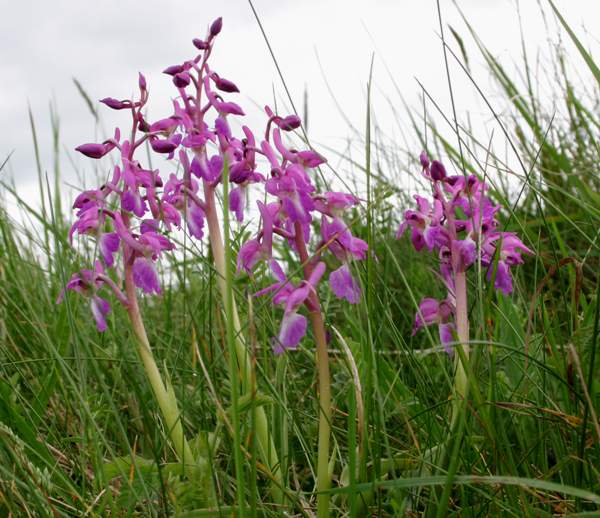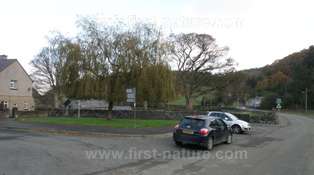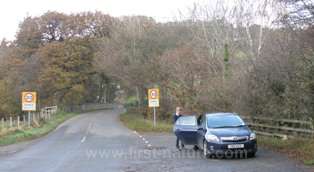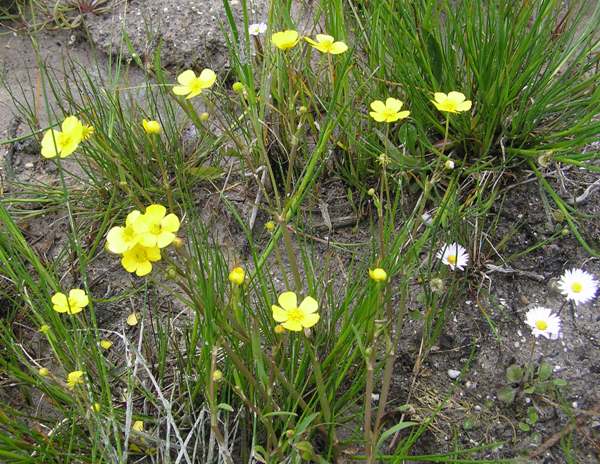Coed Gorswen National Nature Reserve, Near Betws y Coed, North Wales
Below: Early Purple Orchids - the essence of spring at Coed Gorswen

Designations: SSSI
This small woodland is unusual for this part of Wales because it lies on alkaline soils, and the plants that grow in the reserve reflect that and the fact that it has survived virtually unchanged and unaffected by human activity for the past 50 years or so.
Unlike many of the woodlands in North Wales, which are dominated by Sessile Oaks, Coed Gorswen has a much richer mix of trees. The alkaline soils in the area are also home to some rare and interesting plants including various wild orchid species as well as Moonwort.
Access to this NNR is difficult, but there are numerous footpaths in the area. Below we have described how to get to one of the paths that is closest to the reserve.
Coed Gorswen NNR is managed by Natural Resources Wales (NRW).
Directions
Grid Ref: SH752708
Coed Gorswen is best accessed from the village of Rowen, which lies 1.5km off the B5106 road between Betws-y-Coed and Conwy.
The village is small and it will not take you long to find your way around it.
There are two options for parking: in a layby by the Memorial Hall (below, right) where there are public toilets (closed on our most recent visit), or by driving past the school and over a small bridge where, just beyond the 30mph sign for the village, there is a reasonably large layby (further below, right) and a footpath running beside a small stream which leads up a field, around Gorswen Farm and then into the NNR.
Facilities
Below: Layby adjacent to the Memorial Hall in Rowen

There are no facilities at the reserve, but there is a pub in Rowen. There are public toilets close to the village Memorial Hall, but they were closed on our most recent visit. There is a full range of facilities at Conwy, while Bodnant Gardens, which is well worth a visit if you are in this area, has a large cafe and a shop.
Bodnant Gardens is off the A470 road (which runs parallel to the B5106 but on the opposite bank of the River Conwy) between Llanrwst and Conwy and not more than a 10-minute drive from Rowen.
Access
Below: Layby close to the footpath just outside Rowen

From the small bridge a path leads towards the nature reserve. Inside the reserve the paths, which have stiles and gates, can be slippery in wet weather and are not suitable for wheelchair users or for prams and pushchairs. Good waterproof walking shoes are essential during the winter months.
Description of Site
Because the underlying geology in this valley has created an alkaline environment, Coed Gorswen has a combination of tree, plant and insect species that are different from those found in other woodlands in this part of North Wales, which is heavily dominated by Sessile Oaks. Trees in the reserve include Wych Elm, which has proved to be less susceptible to the devastation of the Dutch Elm Disease that destroyed most of our our English Elms (Ulmus procera), although the disease eventually prevails. Alder trees are present in the wetter areas of the reserve, while below the canopy there is Hawthorn, Blackthorn, Elder and Crab Apple.
The base-rich nature of the soils at Coed Gorswen means that the woodland flowers found there are more diverse than in most of the North Wales acid-based oak woodlands. Dog's Mercury (Mercurialis perennis), Enchanters Nightshade and the pungent Ramsons or Wild Garlic (Allium ursinum) are common, but there is also a chance of finding a couple of wild orchid species: Early Purple Orchids (Orchis mascula) in the early spring; and, later in the year, Broad-leaved Helleborines (Epipactis helleborine). Other plant species in Coed Gorswen include Moonwort, Wood Sorrel (Oxallis acetosella) and Heath Dog-violet. In the wetter areas there is Lesser Spearwort (Ranunculus flammula) and Opposite-leaved Golden-saxifrage (Chrysosplenium oppositofolium). The latter thrives in wet flushes on slopes and rocks, creating beautiful golden cascades very early in the year.
Below: Lesser Spearwort grows in damp parts of Coed Gorswen

A walk around a woodland such as Coed Gorswen is a great way to learn first hand something about how ecosystems work. The dense tree canopy helps to prevent the evaporation of water, which is good for lower plant populations, and the woodland has diverse communities of lichens, mosses and liverworts to prove the point. The humidity also favours insects, as does the wealth of flowers that provide them with food in exchange for pollination services; and then the insects provide a source of food for birds.
More than 30 birds species are known to breed in these woods, and this includes many summer migrants such as Wood Warblers, Willow Warblers, Redstarts and Pied Flycatchers.
Other woodland birds making an appearance at Coed Gorswen are Bullfinches, Long-tailed Tits, Marsh Tits, Siskins and Lesser Redpolls.
The insect life at Coed Gorswen includes some rare moths. Beautiful Brocade Moth, Blomer's Rivulet Moth, Pale Pinion Moth and the Brindled Ochre Moth are all recorded from the woods.
Coed Gorswen is a great place for those with a general interest in nature, and from the early spring flowers right through to the autumn fungi there is always something interesting there to see and marvel at.